The Data Donation Project
Go to the Project Site Install the app
At the beginning of April 2020, we launched the official Corona Data Donation App. Since then, over half a million people in Germany have decided to donate their data. For that, we would like to express our sincerest gratitude! There has never before been a research project of this magnitide involving the collaborative efforts of both citizens and scientists. It is really quite unique.
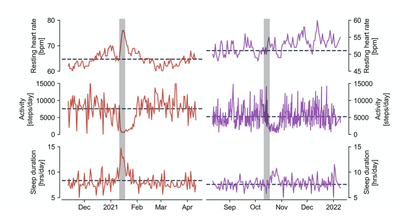
Mobility Monitor
Start Mobility Monitor Go to Project Site
In the Covid-19 Mobility Project, we study movement flows obtained from anonymized mobile phone data. By looking at mobility we can measure how the population reacts to the pandemic, what the effects of different measures are, and use computer models to estimate how this will affect the pandemic.
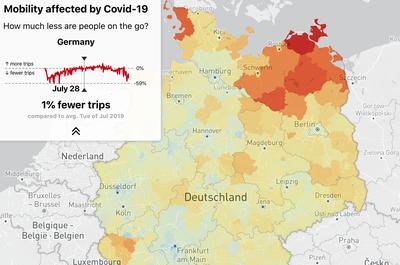
Contact Monitor
Start Contact Monitor Go to Project Site
How a pandemic develops depends on many factors: the biology of the pathogen, its susceptibility to external influences such as humidity and temperature, the success of vaccination campaigns, but most of all it is determined by contacts between individuals: transmissions occur primarily when people have contact with each other. The number of contacts thus gives us an insight into the course of the pandemic. Fewer contacts make it more difficult for the pathogen to spread through the population, whereas more contacts promote rapid spread. In the Contacts Monitor, we show the number of contacts in Germany over time. In the following, we explain how these contacts are measured from GPS data of cell phones.
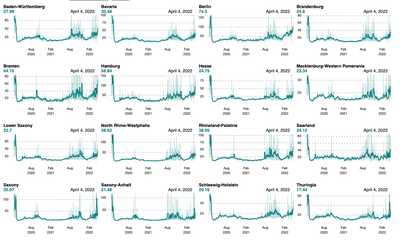
Zepak
The aim of the project is to research which types of ticks are climate-related possibly new and which pathogens they carry. New Tick species behave differently than native ticks and can be burdened with previously unknown pathogens and potentially affect them Transfer people. The aim is to develop a structure for this pilot and citizens in a Citizen Science project motivate them to collect ticks and make them available to the RKI.
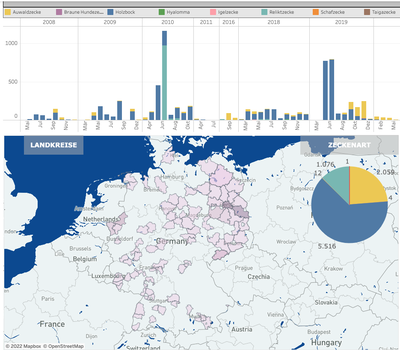
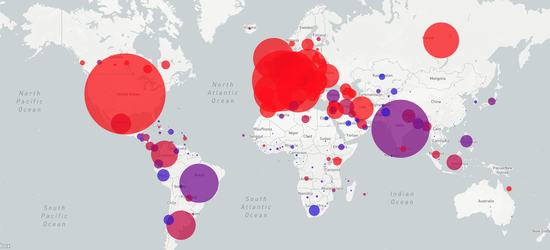
Covid-19 Dynamics on a Global Scale
This interactive visualization illustrates the dynamics of the COVID-19 pandemic since January, 2020 until now on a global scale. The world map shows the number of cases by country as a function of time. This interactive visualization was inspired by the great Hiroki Sayama and his COVID-19 videos of the dynamics of the pandemic. This interactive version was created by Olivia Jack in the ROCS-Team. The animation is updated continously with new data coming in.
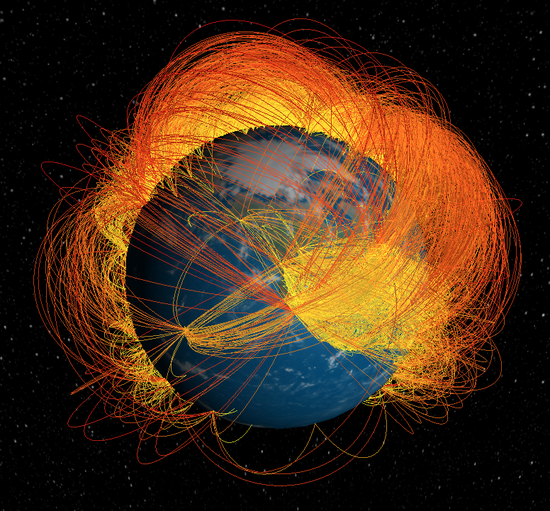
Global Mobility Visualization
This interactive visualization illustrates the worldwide air-transportation network. The network connects approx. 4000 airports globally with roughly 51000 connections. On this network more than 3 billion passengers travel each year. In total humanity travels a total distance of over 15 million kilometers every day (under normal conditions), that is roughly three times the radius of our solar system.
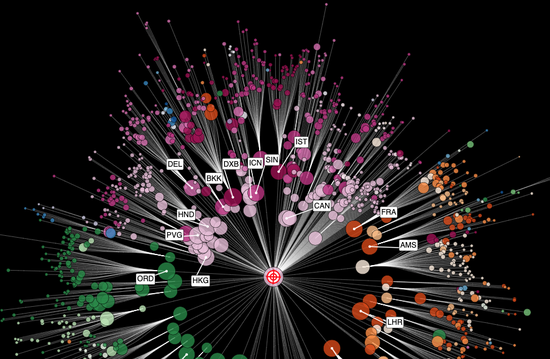
Spreading Routes on a Global Scale
This interactive visualization illustrates the most probable spreading routes of a pandemic with and arbitrary initial outbreak location that you can choose. The visualization implements the ideas of series of papers that introduce and discuss the concept of effective distance in complex, network-driven contagion phenomena.
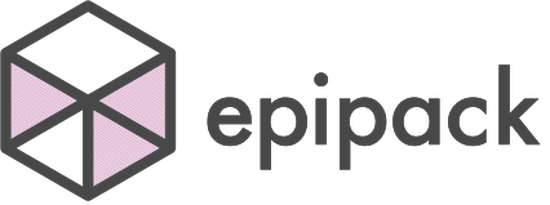
Epipack
Fast prototyping of epidemiological models based on reaction equations. Analyze the ODEs analytically or numerically, or run/animate stochastic simulations on networks/well-mixed systems. Simple compartmental models of infectious diseases are useful to investigate effects of certain processes on disease dissemination. Using pen and paper, quickly adding/removing compartments and transition processes is easy, yet the analytical and numerical analysis or stochastic simulations can be tedious to set up and debug—especially when the model changes (even slightly).
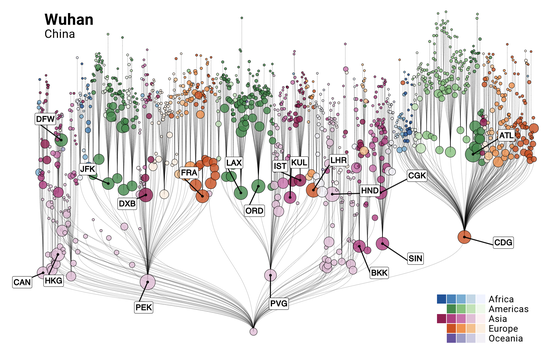
COVID-19 - Event Horizon
The Covid-19 Event Horizon Project was inititated during the onset of the pandemic in the spring of 2020 when the pandemic was predominantly unfolding in mainland China. The project had two independent elements, each containing a predictive model. One model assessed the import risk of SARS-CoV-2 in different countries based on the global air-transportation network. The second dynamical model (SIRX) assessed the contaiment measures on the dynamics of the time course of the pandemic.
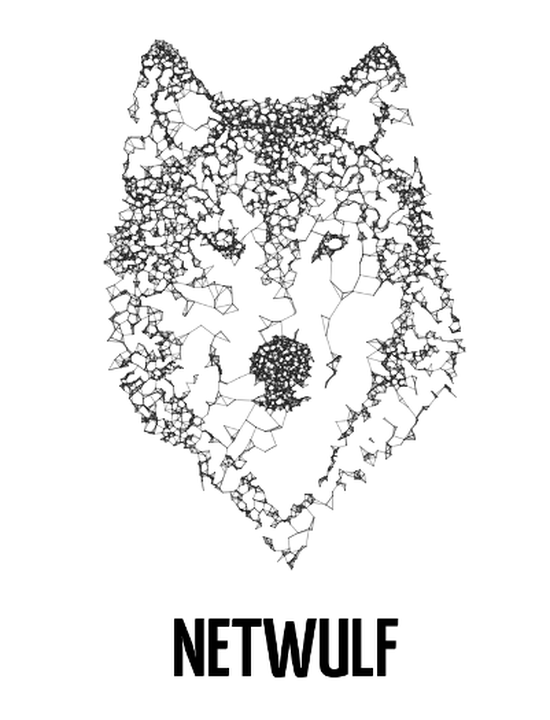
Netwulf
Simple and interactive network visualization in Python. Network visualization is an indispensable tool for exploring and communicating patterns in complex systems. Netwulf offers an ultra-simple API for reproducible interactive visualization of networks directly from a Python prompt or Jupyter notebook. As a research tool, its purpose is to allow hassle-free quick interactive layouting/styling for communication purposes.
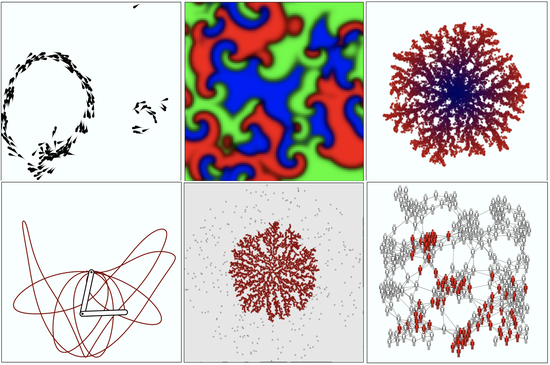
Complexity Explorables
This project is designed for people interested in complex systems and complex dynamical processes. Complexity Explorables hosts different collections of interactive illustrations of models for complex systems in physics, mathematics, biology, chemistry, social sciences, neuroscience, epidemiology, network science and ecology. Topics include pattern formation, synchronization, critical phenomena, chaotic dynamics, evolutionary dynamics, fractals, collective behavior, reaction-diffusion systems and more.
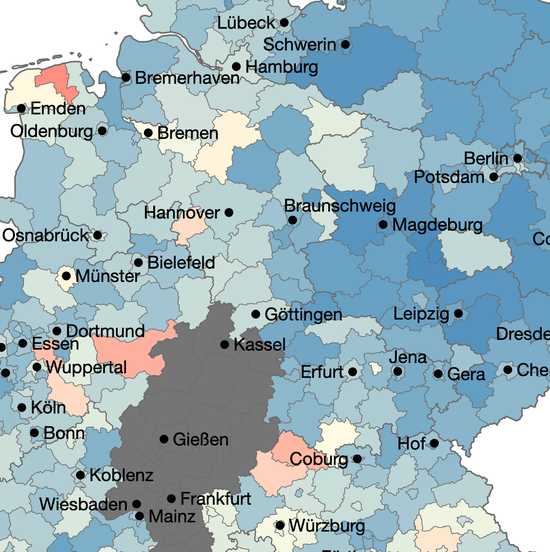
VacMap
VacMap is an interactive visualization of the vaccination status in Germany. VacMap conveys a qualitative and quantitative representation of the vaccination coverage at the regional resolution.